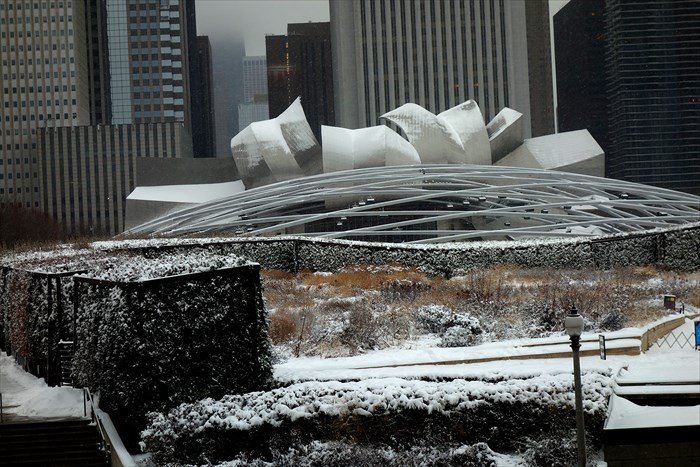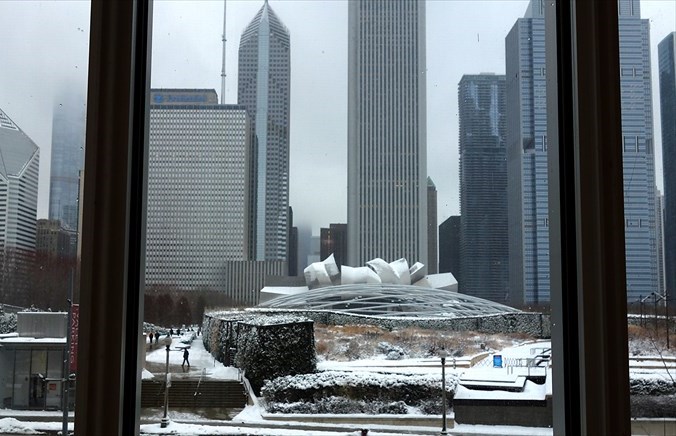More than the Lurie Garden

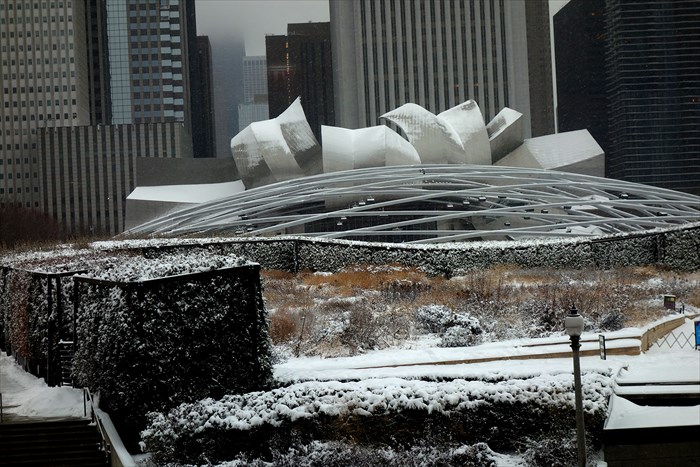 In Chicago for a family event last weekend, I hoped to see Piet Oudolf's Lurie Garden for the first time. Unfortunately Chicago had its first major snow storm that week. The garden was closed. But all wasn't lost.We started with a visit to the Chicago Art Institute, across the street from the Lurie Garden, entering through the new wing designed by Renzo Piano. The new building is a tall metal and glass structure with a light and elegant bearing. It's quite beautiful though this image doesn't do it justice.
In Chicago for a family event last weekend, I hoped to see Piet Oudolf's Lurie Garden for the first time. Unfortunately Chicago had its first major snow storm that week. The garden was closed. But all wasn't lost.We started with a visit to the Chicago Art Institute, across the street from the Lurie Garden, entering through the new wing designed by Renzo Piano. The new building is a tall metal and glass structure with a light and elegant bearing. It's quite beautiful though this image doesn't do it justice.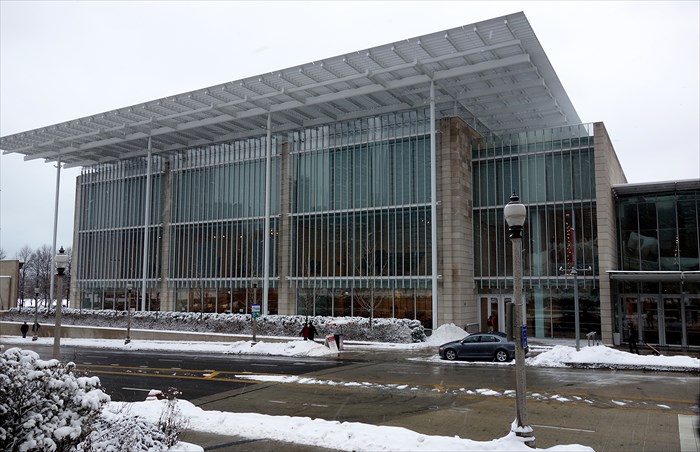 The entry hall is of towering height, suggestive of the high nave of a cathedral, and full of light.
The entry hall is of towering height, suggestive of the high nave of a cathedral, and full of light.
As you stand in the vast space, the view out from this new wing centers on Frank Gehry's Pritzker Pavillion, the signature structure of Millenium Park. This strong faux axial arrangement (not actually a formal axis) visually unifies the Art Institute with Millenium Park.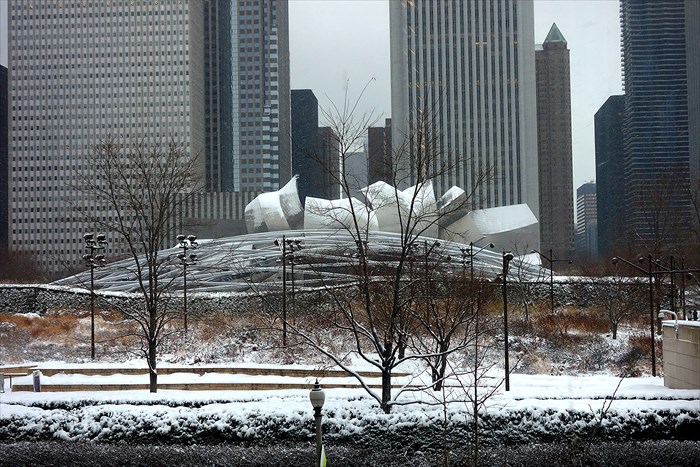
When we finished our museum visit, it was snowing as we crossed the street and entered the park. The first thing I encountered was one of the massive hedges (below) designed by Kathryn Gustafson.
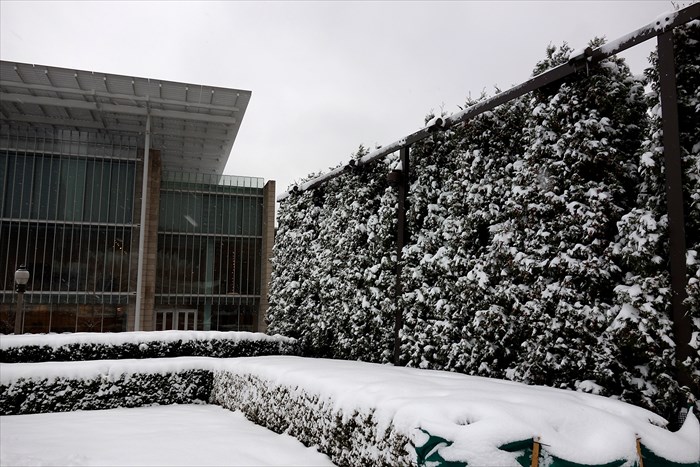 These hedges are all caged in metal frameworks, now mostly filled in. I've seen many photos of the Lurie Garden and Oudolf's plantings, and I never liked the hedges, I couldn't understand why they had those hard metal frames. I couldn't imagine what purpose they served because my focus was exclusively on the Lurie Garden's plantings.
These hedges are all caged in metal frameworks, now mostly filled in. I've seen many photos of the Lurie Garden and Oudolf's plantings, and I never liked the hedges, I couldn't understand why they had those hard metal frames. I couldn't imagine what purpose they served because my focus was exclusively on the Lurie Garden's plantings.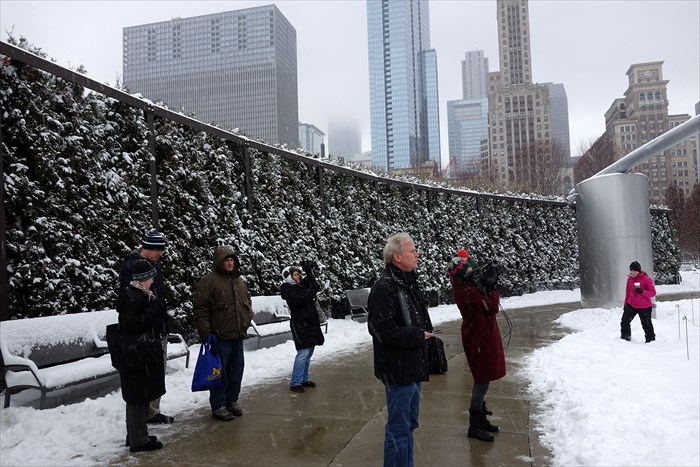 With Lurie Garden closed and therefore not competing for my attention, I was better able to see the framed hedges' aesthetic and spatial purpose, separating, hiding, place-making, creating drama--also a practical purpose, so un- or low-skilled workers can easily prune. This effect may be more pronounced in falling snow, which suppresses detail.This was a powerful recognition for me immediately upon leaving the museum and entering the park, a moment of epiphany.
With Lurie Garden closed and therefore not competing for my attention, I was better able to see the framed hedges' aesthetic and spatial purpose, separating, hiding, place-making, creating drama--also a practical purpose, so un- or low-skilled workers can easily prune. This effect may be more pronounced in falling snow, which suppresses detail.This was a powerful recognition for me immediately upon leaving the museum and entering the park, a moment of epiphany.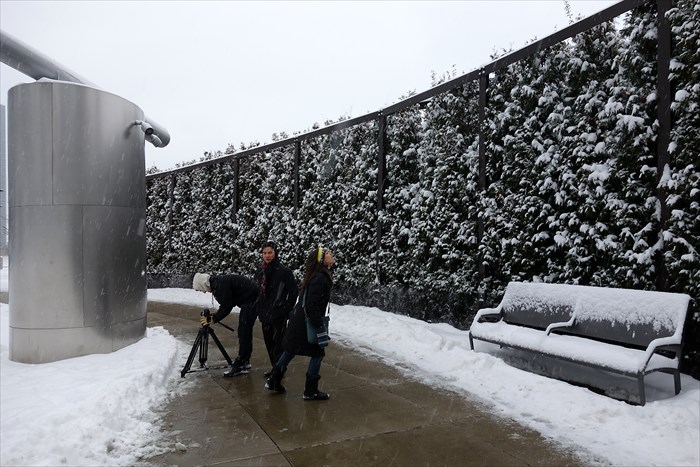 The hedges are, I believe, fourteen feet high, and many feet deep, massive things, and the moment I stepped into the park, then looked back across the street to Piano's masterful building, then back to the hedges, I could see the hedges are almost like buildings in scale. On the Art Institute side, they relate directly to the Piano building's mass and presence. On the other two city sides, they respond visually to the walls of tall skyscrapers that edge the park. And to the lakefront side, they present a presence that prevents the huge open space from dissipating into nothingness. In the wide open area of the park, the hedges are like rock cliffs or natural landscape phenomena. Apart from dividing up the park into useful areas and screening winds from the lakefront, they give the open space of the park weight and heft.They also separate the garden from this huge public performance space with its over scaled support "trellis" bearing lights and speakers; they become a wall, turning this large open area into a concert hall.
The hedges are, I believe, fourteen feet high, and many feet deep, massive things, and the moment I stepped into the park, then looked back across the street to Piano's masterful building, then back to the hedges, I could see the hedges are almost like buildings in scale. On the Art Institute side, they relate directly to the Piano building's mass and presence. On the other two city sides, they respond visually to the walls of tall skyscrapers that edge the park. And to the lakefront side, they present a presence that prevents the huge open space from dissipating into nothingness. In the wide open area of the park, the hedges are like rock cliffs or natural landscape phenomena. Apart from dividing up the park into useful areas and screening winds from the lakefront, they give the open space of the park weight and heft.They also separate the garden from this huge public performance space with its over scaled support "trellis" bearing lights and speakers; they become a wall, turning this large open area into a concert hall.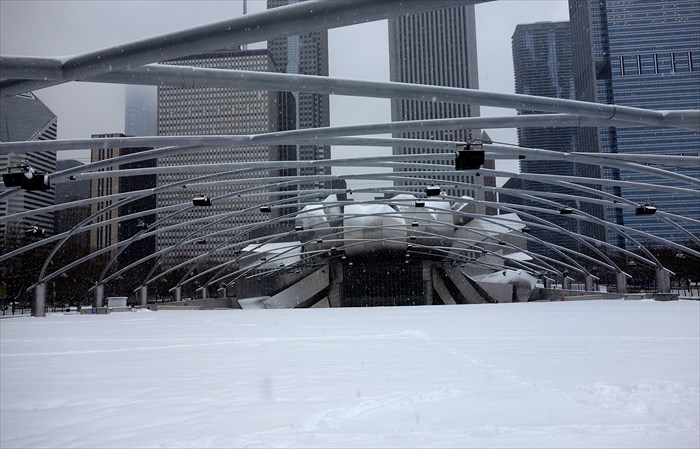 Fortunately, we did see a little of the Lurie Garden.
Fortunately, we did see a little of the Lurie Garden.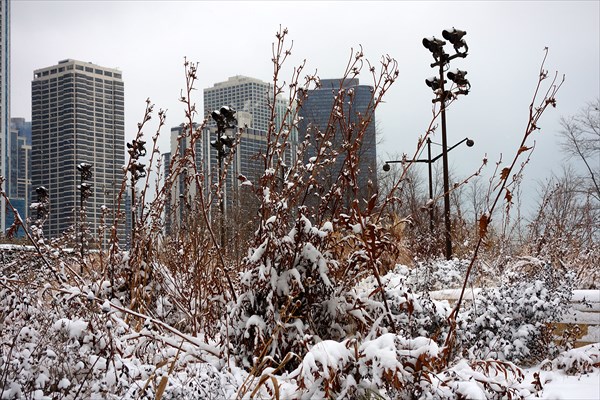 All the internal paths were closed off and impassable, but the perimeter was walkable.
All the internal paths were closed off and impassable, but the perimeter was walkable. I could immediately see, at least at the edges, that Oudolf had used large scale plants of a size to visually balance the scale of the hedges, primarily a lot of Silphium laciniatum.
I could immediately see, at least at the edges, that Oudolf had used large scale plants of a size to visually balance the scale of the hedges, primarily a lot of Silphium laciniatum. The other plants I could make out were also prairie plants--appropriate for this former prairie--Baptisia, Eryngium yuccafolium, grasses buried in snow, probably Sporobolis heterolepsis.
The other plants I could make out were also prairie plants--appropriate for this former prairie--Baptisia, Eryngium yuccafolium, grasses buried in snow, probably Sporobolis heterolepsis. Though I didn't really get to see the Lurie Garden, its inaccessibility forced me to give attention to other successful elements of this great urban space. I'll try to get back to Chicago in the spring.
Though I didn't really get to see the Lurie Garden, its inaccessibility forced me to give attention to other successful elements of this great urban space. I'll try to get back to Chicago in the spring.
